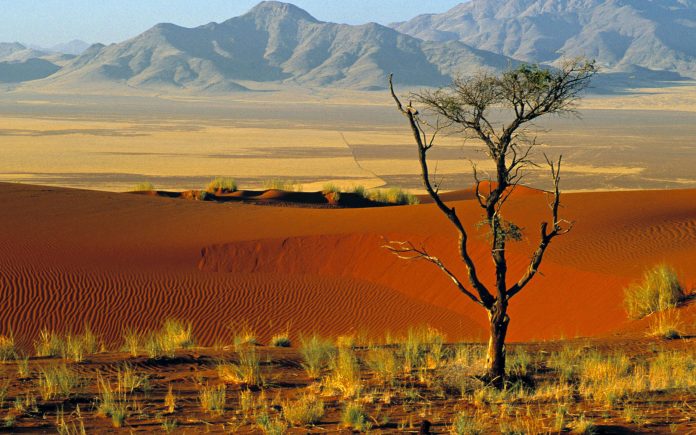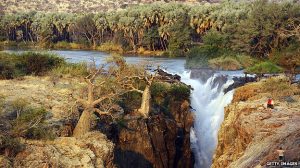Namibia Info – Country in SW Africa bordered on the N by Angola, on the NE by Zambia, on the E by Botswana, on the S by South Africa, and on the W by the Atlantic Ocean. The capital and largest city is Windhoek. The earliest inhabitants of Namibia were the San, who have lived for more than 2,000 years. Nama herders entered the region in the 6th century. The Herero moved into western and northern Namibia in the 16th century, while the Ovambo are more recent migrants, entering after about 1800. The first European visitors were Portuguese navigators Diego Cam and Bartolomeu Dias in the 1500s. The coastlines were explored by the Portuguese and the Dutch, but no permanent settlements were created on the desert coastline. In the early 1800s British and German missionaries entered Namibia.
Britain annexed the port of Walvis Bay in 1878. In 1883, the Bremen trading firm of F. A. E. Luderitz gained a cession of land , around the current harbor town Luderitz, and in 1884 Germany under Otto von Bismarck proclaimed a protectorate over the area, to which the rest of South West Africa was soon added. The native populations revolted against the Germans, which were put down by the German military. Between 1903 and 1908 in the Herero Wars, the Germans killed more than 60,000 Herero and Nama. (In 2004 the German government formally apologized and accepted guilt.) In 1908, diamonds were discovered near Luderitz, bringing a new influx of Europeans into Namibia. In 1915 during World War I, South Africa invaded and occupied Namibia. South Africa was given a League of Nations mandate over the colony. After World War II, South Africa refused to surrender its mandate in Namibia. In the 1966 the UN General Assembly passed a resolution terminating South Africa’s mandate, and in 1968 declared the future nation to be called Namibia.
The Southwest African People’s Organization (SWAPO) began guerrilla warfare against the South African regime. South African efforts at integrating the territory into South Africa were met with resistance from SWAPO and from the international community. Responding to threats from the world community, the South African government promised Namibian independence by the end of 1978. In 1977, the South African government adopted a new Namibian constitution that upheld apartheid policies, restricted SWAPO participation in politics, and sought to continue South African control over foreign affairs after independence. SWAPO and the other opposition groups renewed guerrilla activity and gained control of areas in the N of the country.
In 1988, under an agreement brokered by the United States, the withdrawal of Cuban troops from Angola was linked with elections in Namibia. In 1989 SWAPO won a majority of the parliamentary seats, and party leader Sam Nujoma was elected president. In 1990 a constitution was adopted and Namibia became independent on March 21, 1990. In 1994 Walvis Bay was ceded to Namibia by South Africa. Najoma served three terms as president, but then stepped down in 2004. In the 2004 elections, SWAPO Hifikepunye Pohamba was elected in a land slide. Like many other countries in southern Africa, Namibia has a significant AIDS problem, with more than 40% of the population infected in some northern areas.








